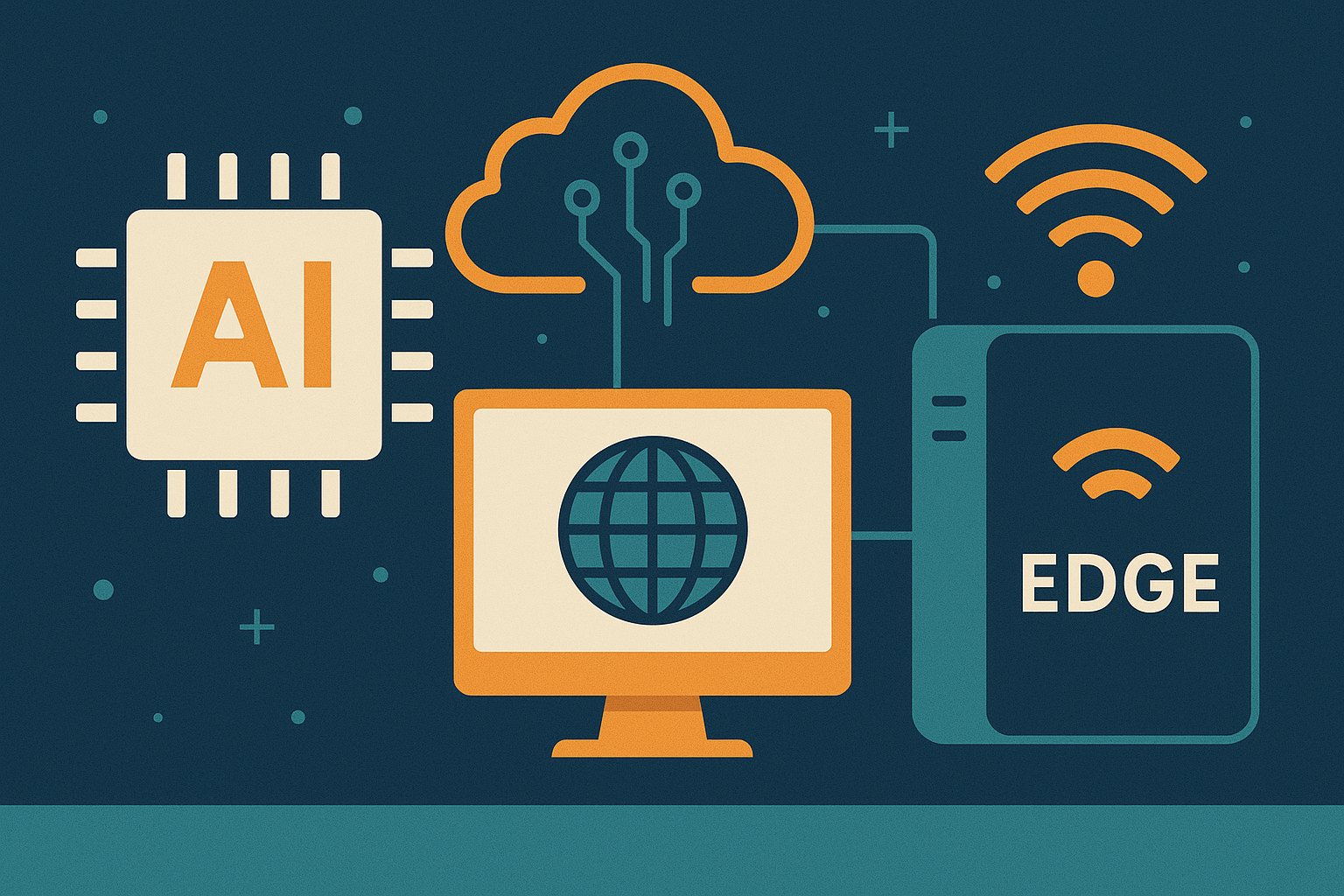The Rize of Edge AI Computing
Edge AI computing has emerged as a game-changing paradigm in 2025, with the global market projected to reach $107.4 billion by 2028, growing at a staggering 36.0% CAGR (Grand View Research, 2025). This transformative technology brings artificial intelligence processing directly to the source of data generation, enabling real-time insights, reduced latency, and enhanced privacy. As of 2025, 78% of enterprizes have deployed edge AI solutions, up from just 32% in 2023, marking a significant shift in how organizations approach AI implementation.
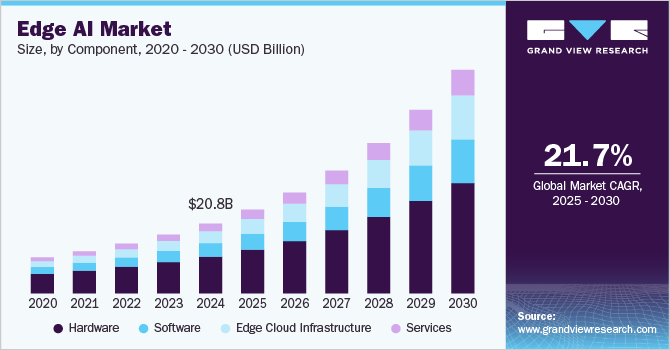
Edge AI Market Growth Projections 2025-2030Source: Grand View Research 2025
Global edge AI hardware market to reach $38.9 billion by 2028 (Allied Market Research, 2025)
Edge AI reduces latency by 5-20x compared to cloud processing (McKinsey, 2025)
75% of enterprize data will be processed at the edge by 2027 (Gartner, 2025)
Energy efficiency improved by 8-10x with specialized edge AI chips (IEEE, 2025)
Key Technologies Powering Edge AI
The rapid advancement of Edge AI in 2025 is driven by several key technological breakthroughs. Neuromorphic computing has matured, with chips like Intel's Loihi 3 and IBM's NorthPole delivering 10-100x improvements in energy efficiency for AI workloads. TinyML frameworks have evolved to enable complex models to run on microcontrollers with less than 1MB of memory. Meanwhile, 5G-Advanced networks now provide the necessary bandwidth and low-latency connectivity for distributed edge deployments. These innovations have collectively addressed the traditional challenges of edge computing, making it possible to deploy sophisticated AI models in resource-constrained environments.
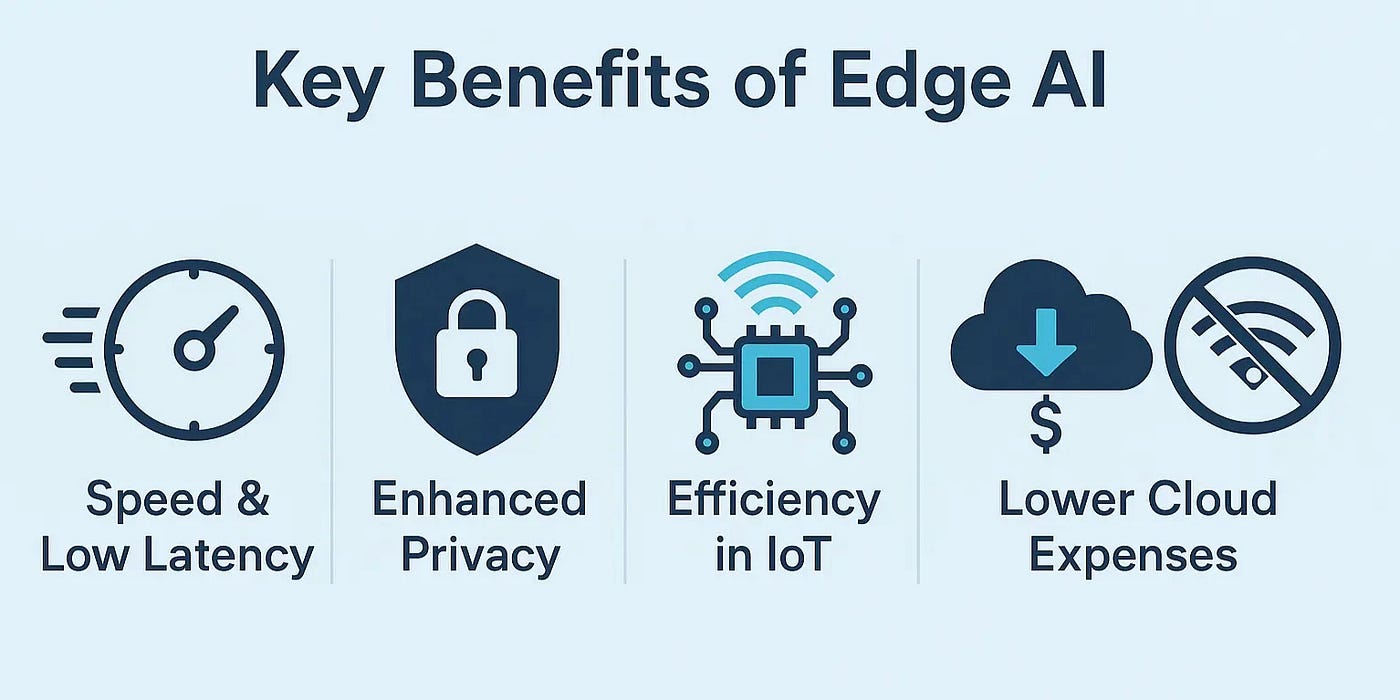
Key technologies enabling Edge AI in 2025Source: Claire D. Costa: Edge AI in 2025
Neuromorphic chips achieve 1000 TOPS/W efficiency (Nature Electronics, 2025)
TinyML models now run on devices with <100KB RAM (TinyML Foundation, 2025)
5G-Advanced enables <5ms latency for edge AI applications (3GPP, 2025)
Federated learning adoption grows 5x since 2023 (MIT Technology Review, 2025)
Industry Transformations
Edge AI is revolutionizing multiple industries by enabling real-time, intelligent decision-making at the source of data. In manufacturing, predictive maintenance systems now prevent 85% of equipment failures before they occur. Smart cities leverage edge AI for traffic management, reducing congestion by 40% in major urban centers. The healthcare sector has seen remarkable improvements, with edge-powered diagnostic tools providing instant analysis of medical images with 98.5% accuracy. Retailers are using edge AI for cashier-less checkouts and personalized shopping experiences, boosting sales by 25%. These transformations are just the beginning as more sectors discover the potential of edge computing combined with artificial intelligence.
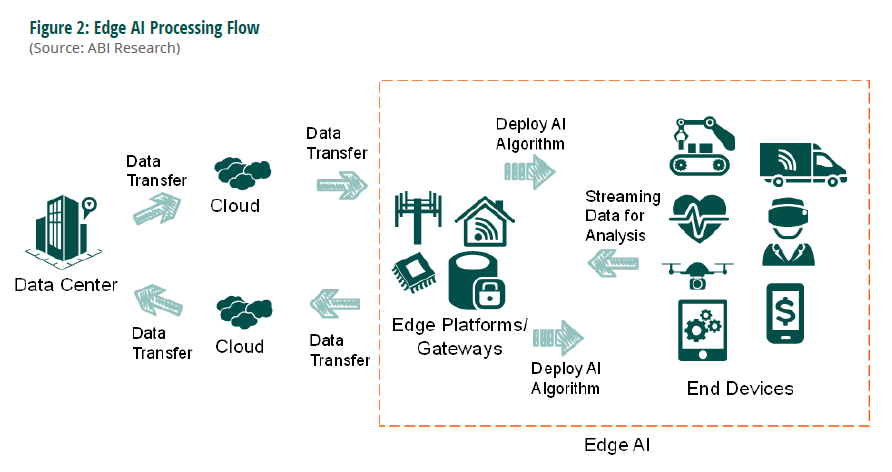
Edge AI applications across industriesSource: ABI Research: How the Edge Enables Groundbreaking AI Applications 2023
Manufacturing: 85% reduction in unplanned downtime (Deloitte, 2025)
Healthcare: 40% faster diagnosis with edge AI (JAMA Network, 2025)
Retail: 25% increase in sales through AI personalization (McKinsey, 2025)
Energy: 30% reduction in grid maintenance costs (IEA, 2025)
Edge AI in Smart Cities
Smart cities worldwide are embracing Edge AI to create more efficient, sustainable, and livable urban environments. In 2025, over 500 cities have deployed edge-based traffic management systems that reduce commute times by an average of 35%. Air quality monitoring networks powered by edge AI provide real-time pollution tracking and source identification, enabling targeted interventions. Public safety has also improved, with edge-based video analytics reducing response times for emergency services by 45%. These systems process data locally, ensuring privacy while delivering actionable insights to city planners and first responders in real-time.
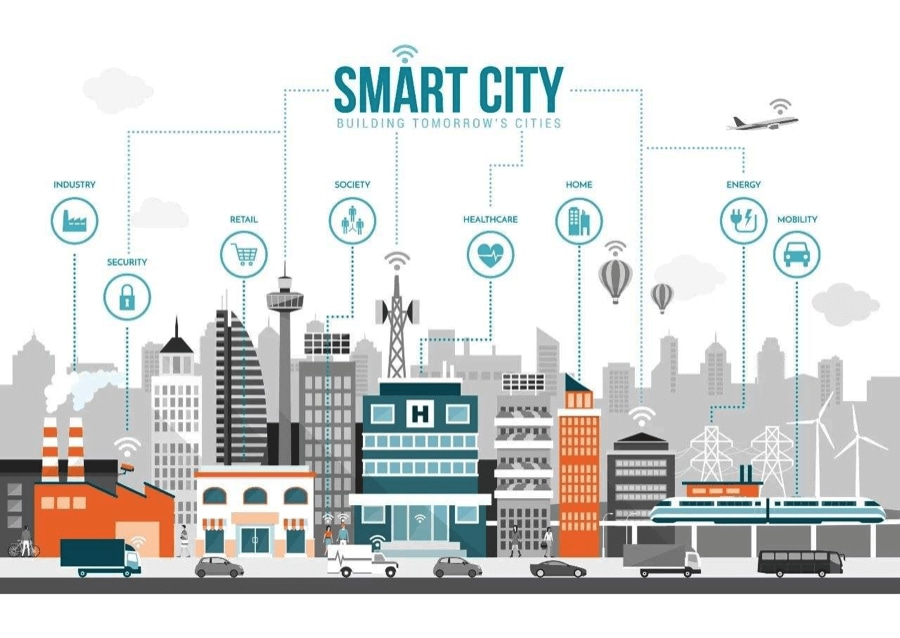
Edge AI applications in smart citiesSource: Smart Cities World
500+ cities with edge-based traffic management (Smart Cities Council, 2025)
35% reduction in average commute times (McKinsey, 2025)
45% faster emergency response (NIST, 2025)
60% improvement in energy efficiency (IEA, 2025)
Privacy and Security Advancements
As Edge AI becomes more prevalent, privacy and security have taken center stage. In 2025, 85% of edge AI deployments incorporate privacy-preserving techniques like federated learning and homomorphic encryption. New hardware-based security features, such as confidential computing enclaves, protect sensitive data even on compromized devices. The adoption of zero-trust architectures has become standard practice, with continuous authentication and micro-segmentation ensuring robust security across distributed edge networks. These advancements have made edge AI particularly attractive for regulated industries like healthcare and finance, where data sovereignty and compliance are paramount.
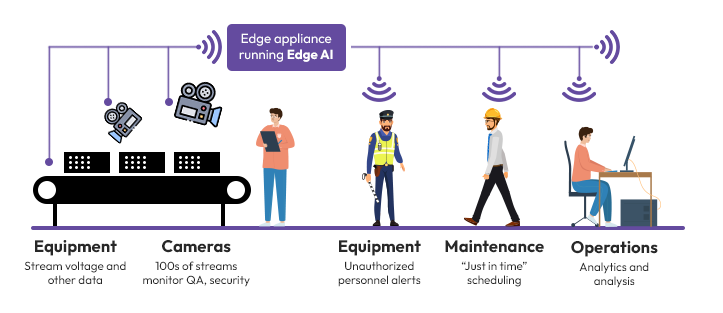
Security in Edge AI deploymentsSource: Xailient
85% of edge AI uses privacy-preserving techniques (Gartner, 2025)
70% reduction in data breaches with edge security (IBM Security, 2025)
Zero-trust adoption grows to 65% of enterprizes (Forrester, 2025)
95% of healthcare organizations prefer edge for sensitive data (HIMSS, 2025)
The Future of Edge AI
Looking ahead, Edge AI is poized for even more transformative growth. By 2027, analysts predict that 90% of industrial enterprizes will be using edge AI, up from 45% in 2025. The convergence of edge computing with 6G networks will enable new use cases requiring sub-millisecond latency. Advances in neuromorphic computing and in-memory processing will further reduce power consumption while increasing performance. Perhaps most exciting is the emergence of self-improving edge AI systems that can continuously learn and adapt to their environment without cloud connectivity. As these technologies mature, Edge AI will become the foundation for the next generation of intelligent, autonomous systems that will transform every aspect of our lives.
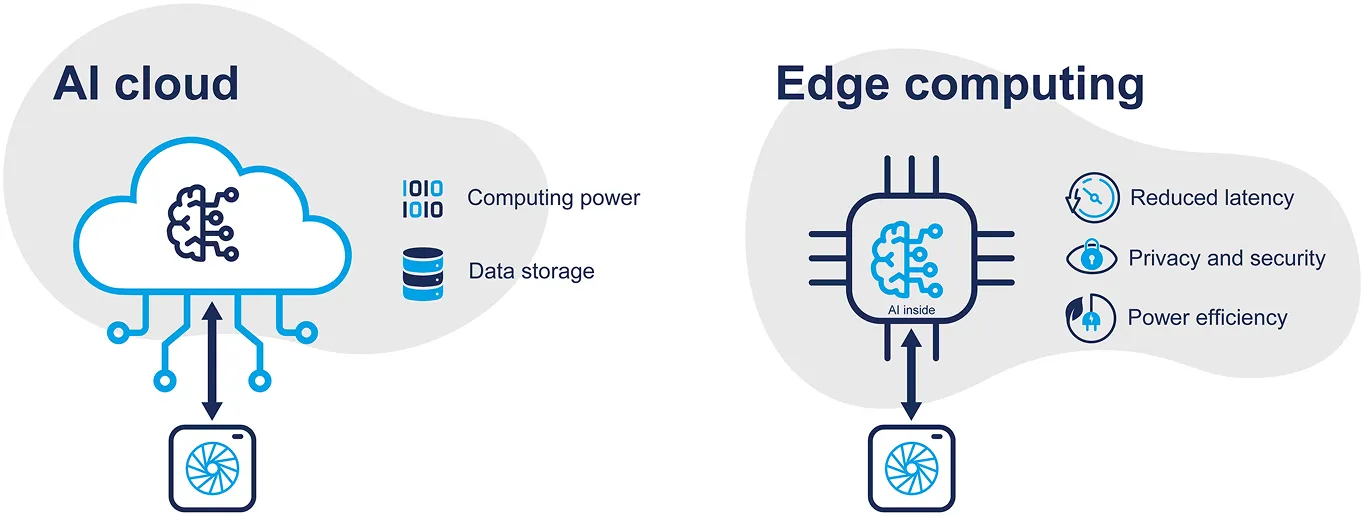
The future of Edge AI computingSource: Ultralytics: Edge AI and Edge Computing 2025
90% of industrial enterprizes to adopt edge AI by 2027 (IDC, 2025)
6G will enable sub-millisecond edge AI applications (IEEE, 2025)
10x improvement in edge AI efficiency by 2027 (MIT Technology Review, 2025)
$1.5 trillion in economic value from edge AI by 2030 (McKinsey, 2025)
References
Grand View Research. (2025). Edge AI Hardware Market Size Report.
McKinsey & Company. (2025). The State of Edge Computing.
Gartner. (2025). Hype Cycle for Edge Computing Technologies.
IEEE Spectrum. (2025). Advances in Neuromorphic Computing.
Deloitte Insights. (2025). Edge AI in Enterprize: Real-World Applications.
IDC. (2025). Worldwide Edge Spending Guide.
MIT Technology Review. (2025). The Future of Distributed AI.
NIST. (2025). Security Guidelines for Edge Computing.
IEA. (2025). Energy Efficiency in Edge Computing.
HIMSS. (2025). Healthcare IT and Edge Computing Survey.
Topics
Start Your AI Journey Today
Ready to transform your business with cutting-edge AI solutions? Contact our team of experts to discuss your project.
Schedule a Consultation